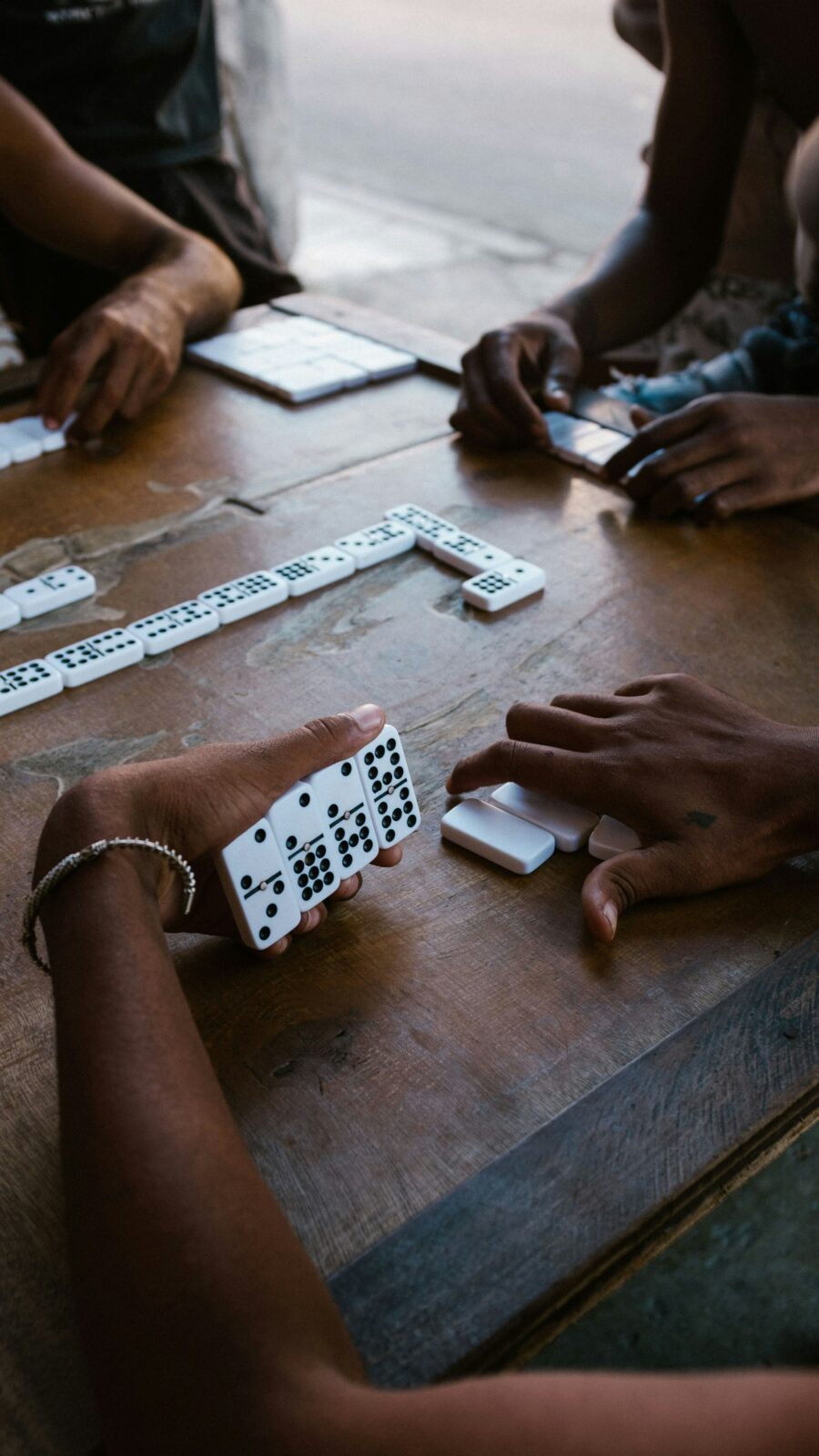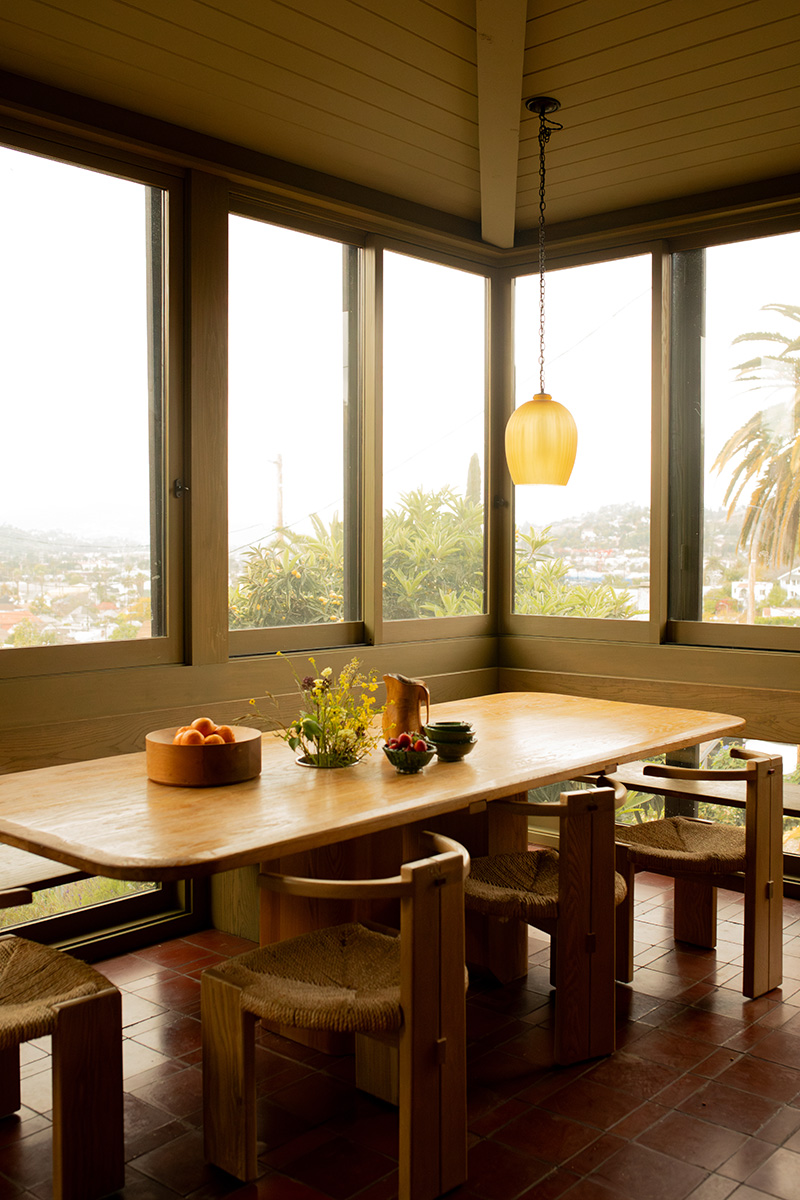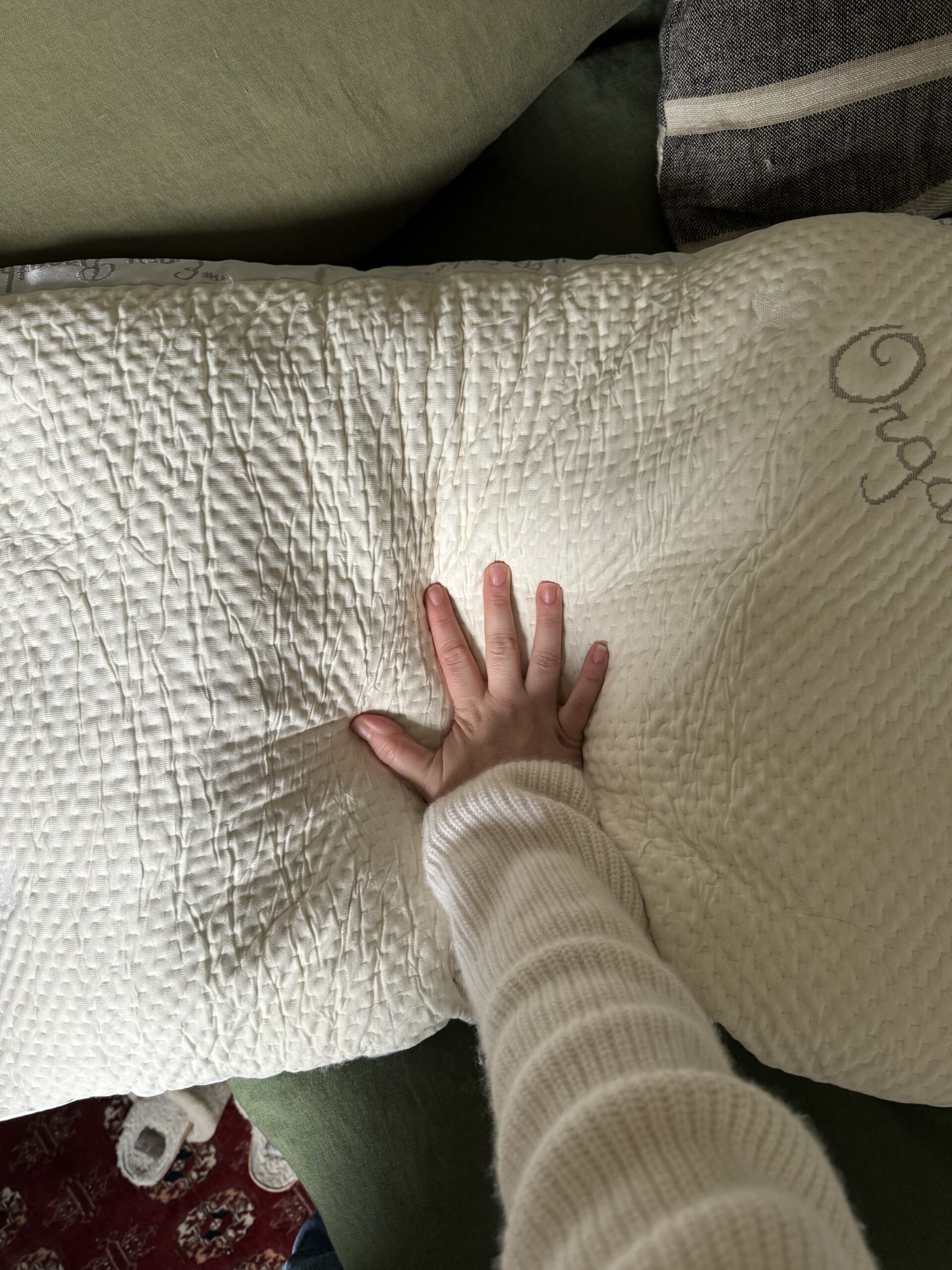
The Case For Puzzles & Other Old School Hobbies
This winter, I spent my evenings in what felt like a time capsule: Lights dimmed, a steaming cup of cocoa at my elbow, I put on my coziest jammies and sat at my dining room table in the post-bedtime hush, where I worked on a puzzle.
Sometimes I lit candles. Sometimes I listened to music or a book, though more often than not I worked in silence. For one to two hours, I sorted, shuffled, rearranged, and very slowly built a 1,000 piece puzzle with a nearly monochrome, black background. It was hard. It was absorbing. It was extremely satisfying.
“I felt tired in that particular way that denotes some effort having been spent.”
When I finally took myself to bed, the usual running checklist of everything I needed to handle the next day did not interrupt the proceedings. I felt tired in that particular way that denotes some effort having been spent. It was a very hard puzzle, and some nights I’d only fit in ten pieces at most. But I couldn’t wait to get back to it the next day.
I started talking about my puzzle hobby to everyone who would listen: “It’s incredible,” I said. “It’s the perfect activity, it’s like I’m using my brain but I’m also taking a break from thinking at the same time.”
I told my husband, who notoriously hates how competitive I can get during board games, that this was the solution to what we call Our Scrabble Problem. “There’s no competition! We can work on this together!”
He was not interested at first but he eventually joined me for a 1,000 piece puzzle with vintage travel maps on it. It’s possible he was motivated at first to help me finish so that he could get the dining room table back, but I saw evidence that he’d worked on Greece and the Bahamas on his own. When he bought me a puzzle table, I knew I had converted him.
“I couldn’t help marveling at what was happening during my solo time at the board: It was relaxing, sure, but what I was really experiencing was closer to a sense of triumph.”
My family came to visit and we worked on a puzzle during idle moments, sitting around the table with drinks and candles, chatting. Even our four-year-old joined in, and my parents bought us a colorful cat puzzle, which she adored.
I was not surprised to discover the social benefits of a big, complicated puzzle, but I couldn’t help marveling at what was happening during my solo time at the board: It was relaxing, sure, but what I was really experiencing was closer to a sense of triumph. “I have no business feeling so accomplished,” I told my husband, “It’s not like I did anything productive or useful.”
“My whole day was a series of checkmarks down a calendar page, and yet I would still collapse into bed with a racing mind, unable to grasp any feeling of satisfaction or completion.”
I was, after all, spending my days doing an extraordinary number of “productive” things, working through multiple checklists: I started each day well before my family woke up in Writer Mode, crossing off scenes I needed to work on for my novel; I then switched to Mom Mode for breakfast and drop-off; then to Work Mode until flipping back to a shared list managed with my husband on the Notes app for dinner and bedtime.
My whole day was a series of checkmarks down a calendar page, and yet I would still collapse into bed with a racing mind, unable to grasp any feeling of satisfaction or completion.
Until The Puzzle.
As I continued to lecture anyone who’d listen, a friend commented that she felt the same way when she gardened. Yes! I remembered feeling this too — I’d taken a break from gardening this last year, but I was suddenly able to recall the way I’d feel after an hour or so of weeding. I always assumed this had something to do with playing in the dirt, which I knew vaguely to be one of those things you’re encouraged to do when you’re stressed (Get messy! Dance like no one’s watching! Live, laugh, love!) But what connected weeding and puzzling for me wasn’t the dirt but the, well, puzzle.
When you’re weeding, you have to identify all the undesirable plants from the ones you’re trying to keep, which can be a bit of a challenge for a new gardener with a yard full of unfamiliar seedlings. I would crouch in the soil and play a sort of analog video game, visually dividing up the sections of what I was looking at and then clearing it out with my hands.
“When I went to bed I’d have that feeling: The calm, satisfying sense of having accomplished something.”
It was methodical and slow, and I would get completely lost in it, ignoring both the passing hours and the discomfort in my body in order to finish the task at hand. But when I went to bed I’d have that feeling: The calm, satisfying sense of having accomplished something.
So I asked the internet, assuming I’d find something I already know about how bad screens are for us. What I was experiencing was probably just what happened when you interacted with the world around you instead of engaging primarily through a screen. And in a way, that is what I found.
But I also learned that the feeling of satisfaction I was getting from my puzzle was a very specific neurological occurrence called the effort-driven rewards circuit.
“The feeling of satisfaction I was getting from my puzzle was a very specific neurological occurrence called the effort-driven rewards circuit.”
Human brains are programmed to feel pleasure or satisfaction when our physical outputs yield a tangible result. From an evolutionary standpoint, this seems like a pretty essential failsafe for our species: When hard physical labor ends with a visible outcome, our body gets a big shot of dopamine, the hormone and neurotransmitter that gives us feelings of pleasure, satisfaction, and motivation.
This makes it possible for us to power through the discomfort necessary to finish a task crucial for our survival. And also explains how I could spend a few hours hunched over tiny puzzle pieces, squinting in the semi-darkness, and be excited to come back and do it again.
Behavioral neuroscientist Kelly Lambert wrote about the phenomenon in her book Lifting Depression: A Neuroscientist’s Hands-On Approach to Activating Your Brain’s Healing Power, where she notes, “As if to impart renewed energy to our behavior, the motor structures that control our movements are intimately connected to the reward center — where we register pleasure.” She goes on to investigate whether a world concerned with innovating for ease has contributed to the rise in depression. “Did we lose something vital to our mental health when we started pushing buttons instead of plowing fields? From a neuroanatomical point of view, I believe the answer is an emphatic yes.”
“The motor structures that control our movements are intimately connected to the reward center — where we register pleasure.”
– Dr. Kelly Lambert, neuroscientist
This is all fascinating. But I do not need puzzles to survive. And I am an exclusive cut-flower gardener, so it’s not like I’m feeding my family by plucking weeds from my zinnia bed. So why is it that I feel like I have done exactly that after engaging in these old school hobbies?
Dr. Lambert says that the link is not just in physical effort, but specifically in activities that involve complex movements of your hands combined with intricate thought processes.
“It’s important that these actions produce a result you can see, feel, and touch, such as knitting a sweater or tending a garden. Such actions and their associated thoughts, plans and ultimate results change the physiology and chemical makeup of the effort-driven rewards circuit, activating it in an energized way.” This instantly resonated with me and my experience, and when I reached out to friends and family I learned that I am not alone.
“My friends report a feeling of satisfaction and accomplishment from engaging in their hobbies in a way that felt notably lacking from their cerebral pursuits.”
I know a lot of writers (aka, people who spend most of the day thinking in front of a computer), but among them there are an extremely high percentage of knitters, gardeners, and visual artists. One friend is an enthusiastic visible mender, and another makes a small loaf of sourdough every other day.
My friends report a feeling of satisfaction and accomplishment from engaging in their hobbies in a way that felt notably lacking from their cerebral pursuits.
While I can sometimes get a sense of accomplishment from crossing off an entire list of mental tasks, I more often have to make a conscious effort to pause and acknowledge what I’ve completed in order to generate that good feeling. And if I don’t do this, it can be harder to get back up and do it all again the next day. Feeling like I’m on a hamster wheel, it turns out, is not exactly motivating. But the hit of neurochemicals released when I activate the effort-driven reward circuit definitely is.
“It’s somewhat surreal to realize that completing a draft of a novel can barely register in my body compared to the near physical high I get from finishing a puzzle of a cat sitting in a coffee tin.”
It’s somewhat surreal to realize that completing a draft of a novel can barely register in my body compared to the near physical high I get from finishing a puzzle of a cat sitting in a coffee tin. Apparently this isn’t my own moral failure, but brain science.
“Because of the interconnectivity of the brain areas that control movement, emotion and thinking, doing activities that involve a number of these components fully engages the effort-driven-rewards circuit,” Dr. Lambert says.
“This newfound knowledge makes me more aware of the moments in my day when I can choose to do something by hand, even if it’s the ‘harder’ way.”
I’ve noticed that sometimes I feel compelled to write notes longhand rather than on the computer, bypassing convenience for the pleasure of using a favorite pen and doodling on a stack of paper. The sensory experience of filling the page with ink is something I always thought was a personal preference, but now I think it must be related to the crucial role our hands play in activating the circuit.
While I am infinitely grateful that I can order my groceries instead of growing, harvesting, and processing them myself, this newfound knowledge makes me more aware of the moments in my day when I can choose to do something by hand, even if it’s the “harder” way, in order to feel more tangibly connected to the experience and the reward.
Have you ever experienced the effort-driven reward circuit by working with your hands? What kinds of hands-on activities do you love to trigger that dopamine hit of satisfaction? Let us know in the comments!
Stephanie H. Fallon is a writer originally from Houston, Texas. She has an MFA from the Jackson Center of Creative Writing at Hollins University. She lives with her family in the Blue Ridge Mountains of Virginia, where she writes about motherhood, artmaking, and work culture. You can find her on Instagram or learn more on her website.




